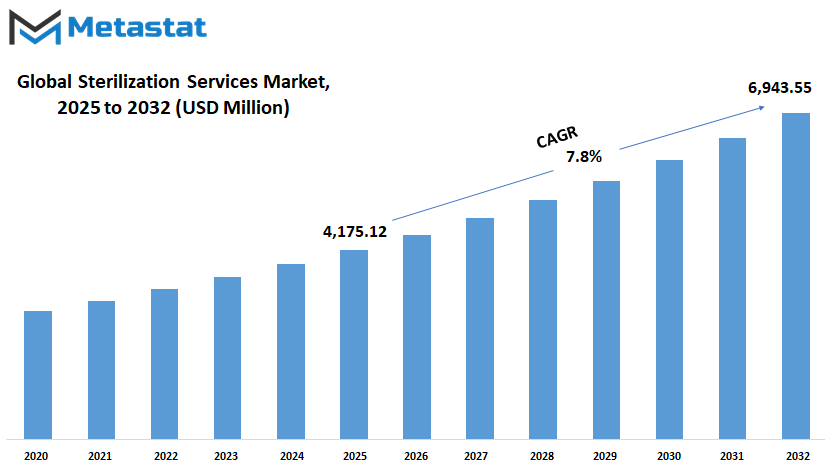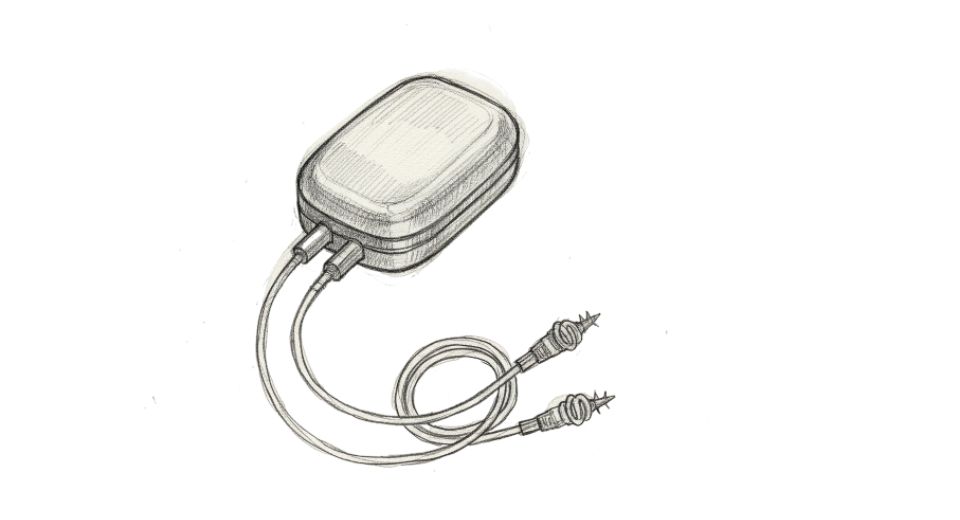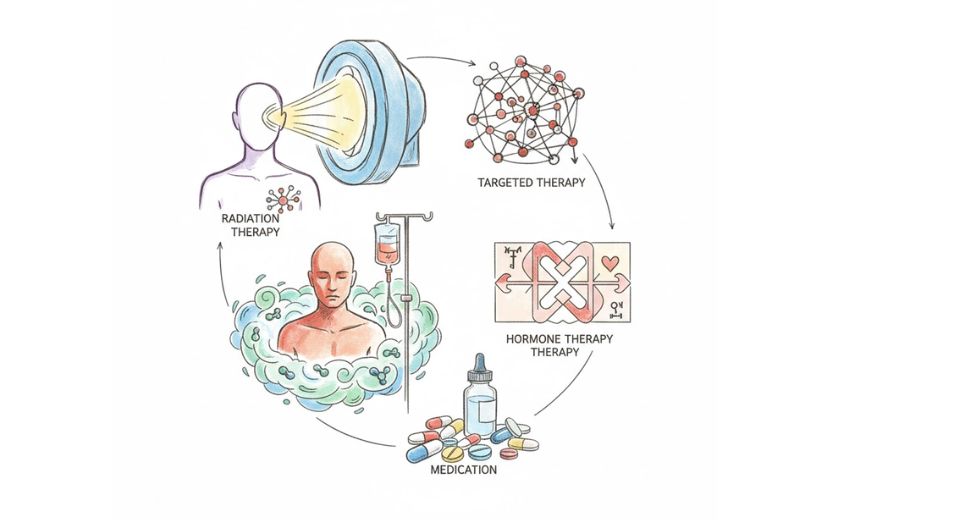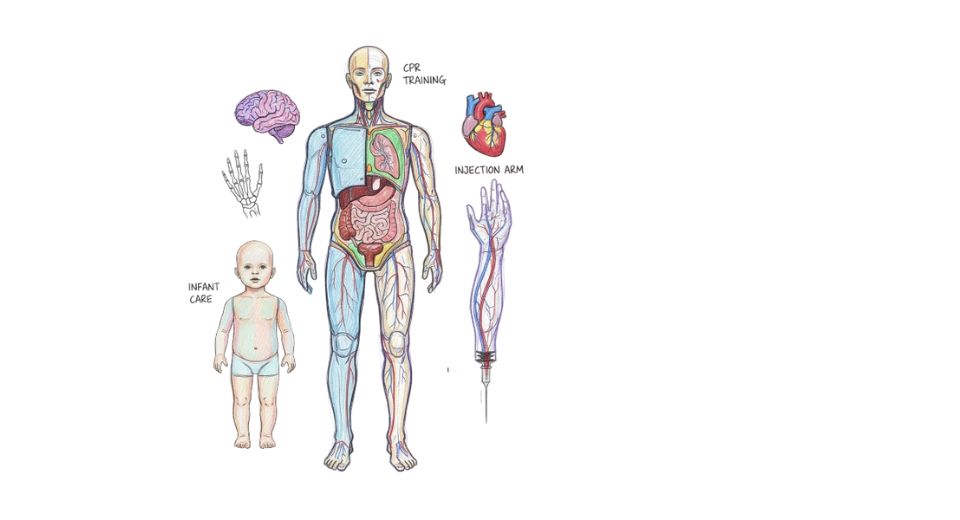MARKET OVERVIEW
The Global Sterilization Services market, a sub-segment in the greater healthcare and life sciences industry, ensures the safety and integrity of medical devices, pharmaceuticals, laboratory equipment, and an increasing number of industrial products. The demand for specialized sterilization processes shall remain relevant due to the tightening of regulatory frameworks in different sectors and the increasing cross-border trade of sterile goods. This service market focuses on the elimination of all forms of living microorganisms, including bacteria, viruses, fungi, and spores, using controlled methods fulfilling international safety and compliance requirements.
In the coming years, the Global Sterilization Services market will push boundaries expanding beyond the traditional healthcare environment. Third-party sterilization vendors will continue to be called upon to assist medical device manufacturers, biotechnology labs, and food processing units, and, extending to aerospace and electronics firms, to maintain sterile environments for their products. Key sterilization methods-grow ethylene oxide (EtO) sterilization, gamma radiation, steam sterilization, and electron beam technology-must remain an integral part of the offering, with a clear course of action on tailoring sterilization methods to product material, sensitivity, and intended use. The complexities of sterilizing mixed materials while maintaining the integrity of the end product will require unique service models and continual process validation.
The sterilization function is an area of increased focus for outsourcing, as organizations try to minimize their operational burden while ensuring unyielding observance of safety standards. The global sterilization services market, for its part, will respond with flexible and scalable offerings that are suited for high-volume and customized needs. Properties of the various contract sterilization facilities will continue to be updated to support differing demands from the industry. For medical device developers with compressed timelines, access to sterilization services will mean a shortcut to the market without compromising on quality assurance.
Sterilization also finds application in research and diagnostics, where accuracy and contamination control remain major concerns. With a biological field of increasing complexity and personalized medicine technologies, maintaining sterility of equipment and environments is a top priority. The Global Sterilization Services market will see these nascent sectors with specialized vendors providing high-performance sterilization protocols and documentation practices that guarantee traceability and reproducibility of scientific work.
Innovation in service methodologies will be accelerated by environmental concerns and regulatory developments regarding agents such as ethylene oxide. Service providers in the Global Sterilization Services market will likely have to eventually ramp up the adoption of cleaner technologies and invest in emission control systems to realize sustainability objectives.
Global Sterilization Services market is estimated to reach $6,943.55 Million by 2032; growing at a CAGR of 7.8% from 2025 to 2032.

GROWTH FACTORS
Medical supplies, pharmaceutical and otherwise, always have to be safe and clean, which is now driving the Global Sterilization Services market demand. More and more healthcare settings transmit the patient safety and infection control needs through the acceptance of efficacy of the sterilization solutions hence imposing ever greater significance on their reliability. Not only the hospitals but pharmaceutical companies and medical device manufacturers are increasing their focus on ensuring their products meet the stringent hygiene attributes. These concerns, therefore, create a demand that pushes the market toward the common acceptance of sterilized products.
Health authorities worldwide are introducing strict regulations and quality checks that merit the companies to meet sterilization standards. These standards are the backbone of safety compliance and provide an impetus towards improved and consistent sterilization services. With stricter regulation in place, it is expected that companies would put in their efforts and resources in ensuring compliance. This has prompted many to turnaround and consider employing professional sterilization service providers who can consistently meet such high standards.
Yet, the Global Sterilization Services market is not without its hiccups in progression. Some of these sterilization methods are now questioned for their environmental dilution. Those which are chemical-based or evoking harmful emissions can enter into arguments for environmental health and sustainability. Long question mark for sustainability of these processes! There are huge capital costs associated with setting up and running a sterilization facility. The high cost of proper equipment, usable sterile labor, and sterile environmental maintenance could act as a big deterrent to smaller companies considering the establishment of their own facilities and this would therefore limit market expansion to some extent.
The trend is being paid to the outsourcing of the sterilization process among pharmaceutical companies and medical equipment manufacturers. This chiefly helps them cut costs and remain focused on their primary manufacturing goals and criterion of safety. Contract sterilization service providers are a valuable cog in the supply chain, delivering expertise and flexibility that in-house systems may not. If more companies value these benefits, then this momentum backward could also create a source of new opportunities and help provide long-term viability for the market.
Hence, the focus moving forward should probably be on cleaner and efficient methods and greater reach into services that are affordable. With advancing technology and insistence on safer health care practices, the expectation is that Global Sterilization Services will gravitate toward more sustainable and innovative solutions.
MARKET SEGMENTATION
By Sterilization Method
The Global Sterilization Services market is fast shaping itself into a crucial world within the healthcare and pharmaceutical landscape to be articulated with advancements that are bound to chart its course towards the future. As industries are getting more conscious about safety, hygiene, and infection control, the demand for effective sterilization techniques would keep expanding. The growth is being driven not just by hospitals and clinics but by manufacturers of medical devices, packaging, and even laboratories that deal with sensitive materials. Never before has it been so vital to ensure that all equipment and products are free from contamination.
In the future, various techniques will be found in increasing use on a worldwide market of Sterilization Services, with each possessing its own strengths. Ethylene Oxide (ETO) Sterilization, for instance, will continue to be used because of its ability to sterilize heat and moisture-sensitive material. ETO penetrates packaging and complex device shapes, making it suitable for instruments with intricate surfaces. On the other hand, Gamma Sterilization, which sterilizes by radiation, is frequently chosen because it can sterilize bulk masses simultaneously; however, as technology is progressing, this method will become energy-efficient and quick.
Electron Beam (E-beam) Sterilization applies electrons instead of gamma radiation. It is characterized by speed and low chemical residue; thus, further developments may see it used more widely on products that require short processing times. Steam sterilization is an alternative classical method, particularly used for metal instruments and heat-resistant materials. The continuing virtues of simplicity and economy keep it in use, but limitations may arise in material compatibility.
The vaporized hydrogen peroxide (VHP) sterilization procedure has captured increased attention as well. It uses a low-temperature process which is ideal for delicate devices; as innovation progresses, VHP may find a wider range of applications, especially in areas where more sustainable solutions are sought. Many other sterilization techniques are likely to evolve, either as a combination of the existing technologies or as the introduction of new chemical mechanisms that offer increased flexibility and reliability.
With emphasis being put on patient safety, tighter regulatory standards, and sustained product quality, the Global Sterilization Services market is poised to gain even more prominence. As companies demand sterilization that is faster, safer, and more efficient, it will lead to greater customization, automation, and digital tracking. These transformations would not only provide enhancements to sterilization processes, but they will also engender the future manner of production and handling of health-related products.
By Business Type
The changes up the global sterilization services within a steady pace as the industries are focused on hygiene, safety, and sanitation from the public and private sectors, with the rise of health awareness in business realizing the need for the service in professional sterilization across the sectors. This demand will only further take momentum in the future due to the more stringent guidelines set forth by regulatory bodies, increasing healthcare systems, and the enhancement of traveling facilitation country wise. The market thus segments on Business Type between Sterilization Validation Services and Contract Sterilization Services, both of which speak effectively on the bigger framework for safety and cleanliness consideration.
As more businesses strive to meet regulatory standards, Sterilization Validation Services are expected to become increasingly relevant as proof of safety for products or environments. These services are intended to verify that sterilization methods are effective and consistent. This is especially vital for the pharmaceuticals, biotechnology, and food production sectors, where contamination could have serious consequences. In a future environment where technologies are more advanced, validation services will evolve to more automated systems capable of producing faster and more accurate results, differing from the current methods. Such progress will help companies reduce the chances of failure and at the same time confirm that the sterilization processes are still within limits of safety.
Contract Sterilization Services will provide much-needed flexibility and cost efficiency, especially for companies that do not have appropriate equipment and space to carry out the sterilization function in-house. It allows businesses to harness the expertise of the best in the field to ensure that the sterilization function is performed professionally and in a reliable manner. As the range of products becomes more diversified, the need for specific sterilization techniques will increase. Firms are likely to be careful in searching for partners able to handle different types of materials and packaging while maintaining product integrity. Contract services are also predicted to expand in scope to provide more than just basic sterilization and would include testing, tracking, and compliance assistance.
In the years to come, the digital tools and data-driven systems are likely to be extensively used in tracking and managing sterilization processes. This would make the whole process more transparent and easier to control. Artificial intelligence and smart sensors might be used to predict problems before they occur, saving time and money. Lastly, the Global Sterilization Services market will reap rewards from worldwide collaboration initiatives among countries in improving standards and sharing best practices. As with either validation in-house or contract services, therefore, sterilization will still be a big priority in all operations for safer and more efficient operations.
By Mode of Delivery
The future of medical and health standards counts very heavily on the Global Sterilization Services market, which will grow tremendously as industries expand. There will be an increased need for such sterilization solutions that are really dependable and efficient. These services no longer only cater for existing requirements; they also anticipate future requirements. This market will only continue to grow with most industries focusing on cleaning, disinfection, and infection control. Businesses, especially those in healthcare, pharmaceuticals, and food production, will look to trusted partners who handle sterilization work with care and consistency.
When we say how these services are provided, there are generally two categories: On-Site Sterilization Service and Off-Site Sterilization Service. Each has its own advantages based on what a business needs. On-site sterilization is everything done at the customer's location. It helps businesses that handle sensitive equipment and want it back very quickly. It seems, in the future, that this system might be widespread as companies strive for controlling their operations more closely and wish to internalize things. It also negates the hazards involved in transporting medical or technical tools.
Offsite sterilization means taking the equipment to a specialized facility. These facilities will become even more popular as they are open to more companies because they do not have enough space or resources to manage the sterilization themselves. Outsourcing means quality sterilization without incurring high prices of machinery and personnel. Such companies will be expected to advance their systems to enable faster and dependable results. In the years to come, off-site providers may use smarter tracking tools as well as flexible scheduling to meet the increasing demands of their customers.
Both delivery methods keep changing with advancing technology. More automation, data tracking, and eco-friendliness will likely be the norm. As rules become stricter and hygiene awareness grows, industries otherwise not typically known to rely on sterilization providers will broaden their horizons. This is not going to be the case for hospitals and labs only, but also cosmetics, packaging, and electronics.
The Global Sterilization Services market keeps growing with new challenges. The companies that can bring the evolution of services and put their customers right at the center of it all will lead the way in this changing landscape.
By End User
The Global Sterilization Services market will keep on growing as healthcare systems, pharmaceutical companies and medical device manufacturers are increasingly looking for effective and safe means of eliminating harmful microorganisms. The more people gain access to high-quality healthcare and hygiene standards, especially in developing areas, the higher the need for assurance in sterilization processes. Hospitals and clinics will continue to emerge as the biggest users of sterilization as they maintain cleanliness within surgical environments, safeguard patients, and prevent the infection of pathogens. They treat hordes of patients in a single day, alongside the high volumes of medical procedures, highlighting the criticality of sterilization as an integral part of daily routine operations.
Pharmaceutical companies will directly affect the future of the Global Sterilization Services market. These companies must maintain impeccable cleanliness standards throughout drugs' production, particularly injectable or inhaled medical formulations whereby the drugs directly enter blood circulation or the organ intended for therapy. Increased complexity in formulations will only turn such modalities into necessity. Any contamination may prove dangerous in terms of safety or efficacy of medicine. This makes sterilization a new un negotiable phase in the pharmaceutical process.
The medical device manufacturers will also keep holding strong contributions to the growth of this market. They keep introducing new devices that are going to be mostly ones that are entering the human body- through surgical means and implants, for example, and through diagnostic equipment- such as blood and urine analysis devices. Any device such as these must not have even the slightest trace of bacterial or viral contamination. Innovation, in turn, keeps bringing out more advanced devices. Therefore, the demand for such services that are sterilizing will broaden into adaptation with newer materials and structures.
Contract sterilization service providers will become even more precious in the near future. Many of the healthcare and manufacturing organizations are now looking forward to outsourcing contract sterilization service provider using time and cost-effective means complying with the regulations. Some of these were specialists in sterilization and invest in new technologies. This advantage is utilized by other companies to get expert-level services without elaborative infrastructure. As more and more of their focus is drawn toward their core work, they will depend increasingly on these service providers to support them in sterilization.
In the future, automation, and environmental concerns plus hi-tech medical treatment advancement will be strong determinants in shaping the Global Sterilization Services market. With fresh new sterilization modalities coming which are fast, greener and sensible even for sensitive materials, the attractiveness of these modalities is likely to soar high. Gradually sterilization services are going to be an integral part of keeping healthy and clean environments within medical institutions, prepared for the future as the industries grow and the tighter regulations draw around them.
|
Forecast Period |
2025-2032 |
|
Market Size in 2025 |
$4,175.12 million |
|
Market Size by 2032 |
$6,943.55 Million |
|
Growth Rate from 2025 to 2032 |
7.8% |
|
Base Year |
2024 |
|
Regions Covered |
North America, Europe, Asia-Pacific, South America, Middle East & Africa |
REGIONAL ANALYSIS
The Global Sterilization Services Market has been steadily charting its way across the various world regions in their own way in the evolution of the industry. Looking at sterilization services from the viewpoint of regional specificities, geographical diversity in standards of health care, industrial development, and population growth will continue to nucleate demand for sterilization services in times to come. North America, comprising the U.S.A., Canada, and Mexico, on the whole, has had a very strong say in this market from the very beginning, because of stringent health care regulations along with high emphasis on cleanliness, especially in medical setups. The U.S. stands to maintain forefront standing in innovating and investing in sterilizing technologies, given its highly developed infrastructure and sustained demand for safe medical practices.
On the other hand, in Europe, the countries like UK, Germany, France, and Italy have maintained steady growth. These countries have well renowned health care systems or provide services in a way of practicing efficient sterilization methods in regard to patient safety. Subsequently, with partnerships emerging between hospitals and sterilization service providers, this demand for infection control would keep increasing. The demand on the aging population in Europe might also assist this, as older persons in fact require more medical care, in turn raising the need for sterilized materials.
In terms of significant growth, Asia-Pacific, which includes such countries as India, China, Japan, South Korea, etc., could be very high. The rapid growth of healthcare plants, coupled with the growing population, will foster a need for safe and efficient sterilization services. The very attractive markets will soon be India and China as they pump huge investments into public health infrastructure. Furthermore, since safety and hygiene are becoming the buzzwords, awareness about sterilization will hit the other sectors outside health.
With Brazil and Argentina, this would give mere momentum to South America. It would soon begin looking towards a focus on upgrading medical practices and hospital upkeep. The implementation of international health standards across these regions will further boost growth in this market. Lastly, in the Middle East & Africa, with countries such as the GCC countries, Egypt, and South Africa, this market will gradually kick-off. The concurrent evolvement of healthcare with investments from both public and private sectors will steer future demand.
The Global Sterilization Services market shall witness a plethora of opportunities for expansion, with regional trends and requirements continuously guiding its direction. The drive for more sterilization services will grow only stronger as health and safety remain prime global concerns.

COMPETITIVE PLAYERS
The Global Sterilization Services market is driven by an influential group of companies which are steadily changing sterilization being serviced throughout healthcare, pharmaceutical, and other industries. Players like Steris Corporation, Sterigenics International LLC, 3M Company, and Cantel Medical Corporation, amongst others, each contribute their strengths and innovations. With the demand for safer and more efficient sterilization methods, these companies now keep ahead of demand and set standards for the others, perhaps being followed by others. They play an important role in improving techniques and developing systems to provide precision and reliability for sterilization.
For the foreseeable future, competition between these companies will spur development. Technologies still at early stages of development will be refined, while others that seemed expensive or impractical will become extensively used. For example, companies like Noxilizer, Inc. and E-BEAM Services, Inc. are defying conditioning by concentrating on these advanced methods that forego toxic chemicals and minimize processing time. This concept directs the future toward a safe and sustainable sterilization alternative being the norm, rather than the premium.
As a result of the momentum in healthcare development and persistent global health concerns, sterilization service demand is ever increasing. Here lies an opportunity for players like Andersen Sterilizers and Beta-Gamma-Service GmbH & Co. KG to broaden their base and establish partnerships on a global scale. By contrast, newer players and regional providers like MICROTROL Sterilisation Services Pvt. Ltd. and Medistri SA are expected to gain more ground by providing customized solutions and rapid services for local markets. These players are expected to capitalize on their flexibility in meeting the rising demand and enhancing accessibility in places where sterilization service has not yet been very stable or advanced.
The movement forward will likely be concentrated around automation, artificial intelligence, and smart tracking systems that allow real-time monitoring of each step in the sterilization process. Companies such as Stryker Corporation, Cretex Companies, Inc., and Life Science Outsourcing, Inc. are possibly going to invest much more into data-driven systems that would act to reduce human error and document process accordingly. Such innovation will eventually become a requirement for maintaining trust and compliance with tougher global regulations. The Global Sterilization Services Market is poised to be connected further and have companies supplying not only services but smarter, quicker systems in place for the future challenges.
Sterilization Services Market Key Segments:
By Sterilization Method
- Ethylene Oxide (ETO) Sterilization
- Gamma Sterilization
- Electron Beam (E-beam) Sterilization
- Steam Sterilization
- Vaporized Hydrogen Peroxide (VHP) Sterilization
- Other
By Business Type
- Sterilization Validation Services
- Contract Sterilization Services
By Mode of Delivery
- On-Site Sterilization Services
- Off-Site Sterilization Services
By End User
- Hospitals and Clinics
- Pharmaceutical Companies
- Medical Device Manufacturers
- Contract Sterilization Service Providers
Key Global Sterilization Services Industry Players
- Steris Corporation
- Sterigenics International LLC
- 3M Company
- Cantel Medical Corporation
- E-BEAM Services, Inc.
- Noxilizer, Inc.
- Andersen Sterilizers
- Beta-Gamma-Service GmbH & Co. KG
- Medtronic plc
- Stryker Corporation
- Cretex Companies, Inc.
- Cosmed Group, Inc.
- BGS Beta-Gamma-Service GmbH & Co. KG
- Medistri SA
- MICROTROL Sterilisation Services Pvt. Ltd.
- Life Science Outsourcing, Inc.
WHAT REPORT PROVIDES
- Full in-depth analysis of the parent Industry
- Important changes in market and its dynamics
- Segmentation details of the market
- Former, on-going, and projected market analysis in terms of volume and value
- Assessment of niche industry developments
- Market share analysis
- Key strategies of major players
- Emerging segments and regional growth potential








 US: +1 3023308252
US: +1 3023308252






